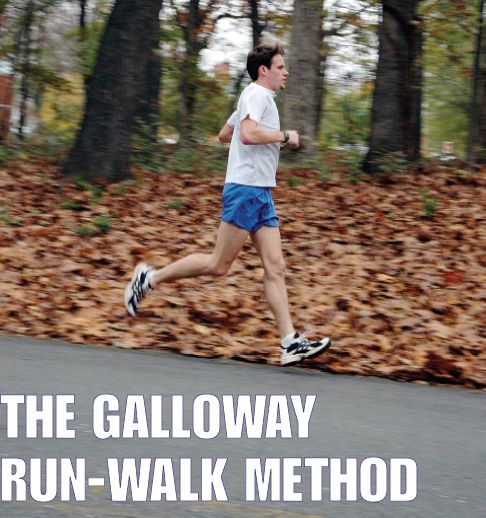

“The scheduled use of walk breaks gives each runner control over fatigue and running enjoyment.”
One of the wonderful aspects of running is that there is no definition of a “runner” that you must live up to. There are also no rules you must follow as you do your daily run. You are the captain of your running ship, and it is you who determines how far, how fast, and how much you will run, walk, etc. Yes, running has always been a freestyle type of activity where each individual is empowered to mix and match the many variables, and come out with the running experience that he or she chooses. Walking is the most important variable for the first time runner, and can even give the veteran a chance to improve time. Here’s how it works.
Walk before you get tired
Most of us, even when untrained, can walk for several miles before fatigue sets in because walking is an activity that we are bio-engineered to do for hours. Running is more work because you have to lift your body off the ground, and then absorb the shock of the landing, over and over. This is why the continuous use of the running muscles will produce fatigue, aches, and pains much more quickly. If you walk before your running muscles start to get tired, you allow the muscle to recover instantly—increasing your capacity for exercise while reducing the chance of next-day soreness.
The “method” part involves having a strategy. By using a ratio of running and walking, you will manage your fatigue. Using this fatigue-reduction tool early gives you the muscle resources, and the mental confidence to cope with any challenges that can come later. Even when you don’t need the extra muscle strength and resiliency bestowed by the method, you will feel better during and after your run, and finish knowing that you could have gone further.
“The run-walk method is very simple: you run for a short segment, and then take a walk break, and keep repeating this pattern.”
Walk breaks allow you to take control over fatigue in advance, so that you can enjoy every run. By taking them early and often you can feel strong, even after a run that is very long for you. Beginners will alternate very short run segments with short walks. Even elite runners find that walk breaks on long runs allow them to recover faster. There is no need to reach the end of a run feeling exhausted if you insert enough walk breaks for you on that day.
Walk Breaks
| • | give you control over your level of fatigue |
| • | erase fatigue |
| • | push back your fatigue wall |
| • | allow for endorphins to collect during each walk break—you feel good! |
| • | break up the distance into manageable units (“one more minute”) |
| • | speed recovery |
| • | reduce the chance of aches, pains and injury |
| • | allow you to feel good afterward—carrying on the rest of your day without debilitating fatigue |
| • | give you all of the endurance of the distance of each session—without the pain |
| • | allow older runners to recover fast, and feel as good or better than the younger days |
A short and gentle walking stride
It’s better to walk slowly, with a short stride. There has been some irritation of the shins when runners or walkers maintain a stride that is too long. Relax and enjoy the walk.
No need to ever eliminate the walk breaks
Some beginners assume that they must work toward the day when they don’t have to take any walk breaks at all. This is up to the individual, but is not recommended. Remember that you decide what ratio of walk-run to use. There is no rule that requires you to run any ratio of run-walk on any given day. I suggest that you adjust the ratio to how you feel on a given day.
I’ve run for 50 years, and enjoy running more than ever because of walk breaks. Each run I take energizes my day. I would not be able to run almost every day if I didn’t insert the walk breaks early and often. I start most runs taking a short walk break every minute. By 2 miles I am usually walking every 3-4 minutes. By 5 miles the ratio often goes to every 7-10 minutes. But there are days every year when I stay at 3 minutes and even a few days at 1 minute.
How to keep track of the walk breaks
There are several watches which can be set to beep when it’s time to walk, and then beep again when it’s time to start up again. Check our website (www.jeffgalloway.com), or a good running store for advice in this area.
How to use walk breaks
| 1. | Start by running for 5-10 seconds, and walking 1-2 minutes. |
| 2. | If you feel good during and after the run, continue with this ratio. If not, run less until you feel good. |
| 3. | After 3-6 sessions at the ratio, add 5-10 seconds of running, maintaining the same amount of walking. |
| 4. | When you can run for 30 seconds, gradually reduce the walking time to 30 seconds, every 3-6 sessions. |
| 5. | When 30 seconds/30 seconds feels too easy, gradually increase the running time, 5-10 sec every 3-6 sessions. |
| 6. | On any given day, when you need more walking, take it. Don’t ever be afraid to drop back to make the run more fun, and less tiring. |
“Our bodies crave exercise, and reward us in many ways when we do so.”